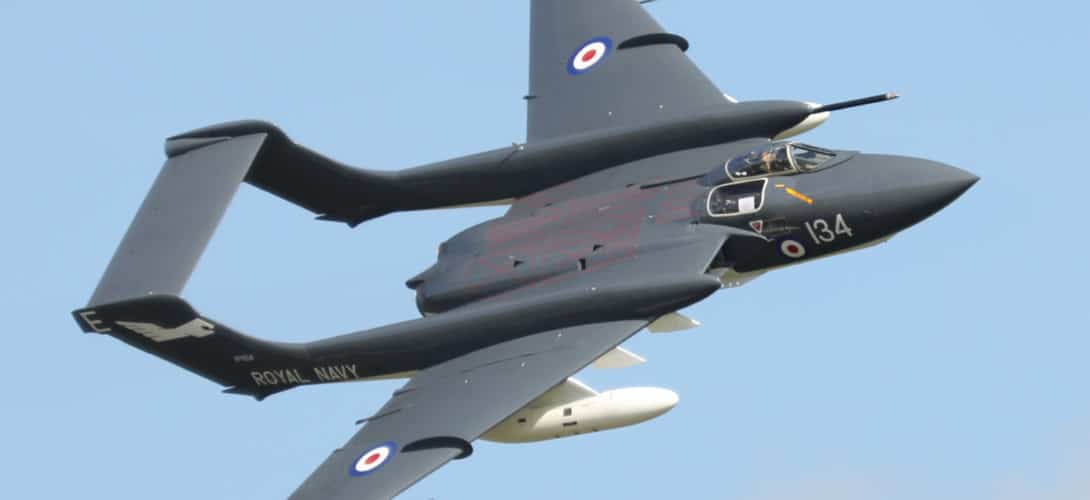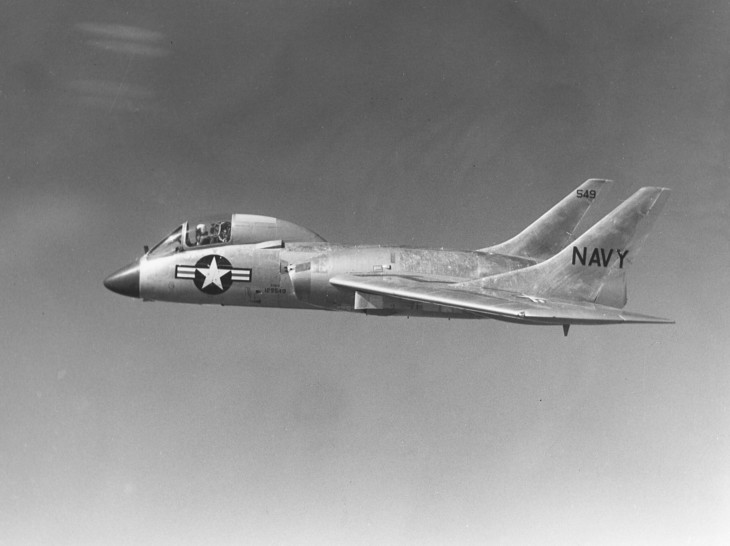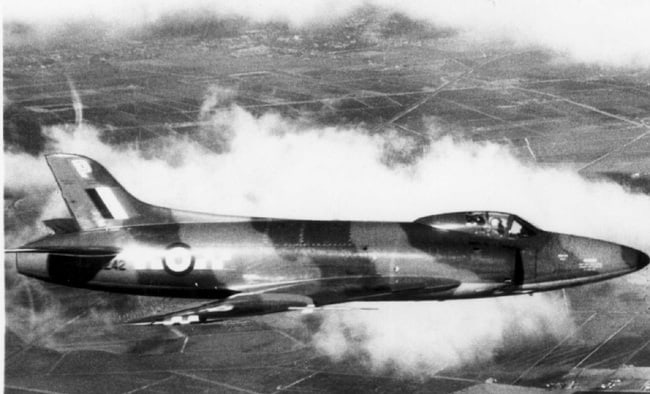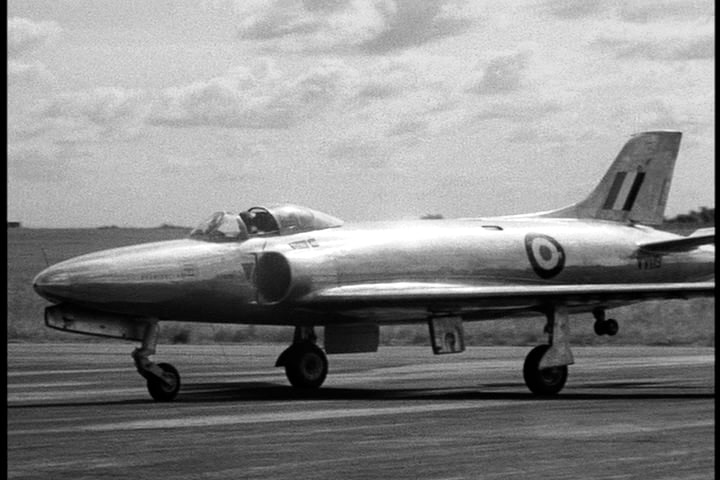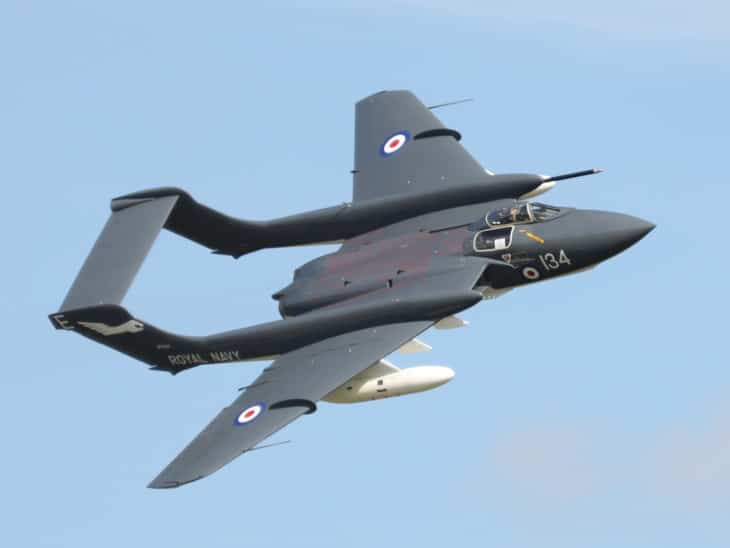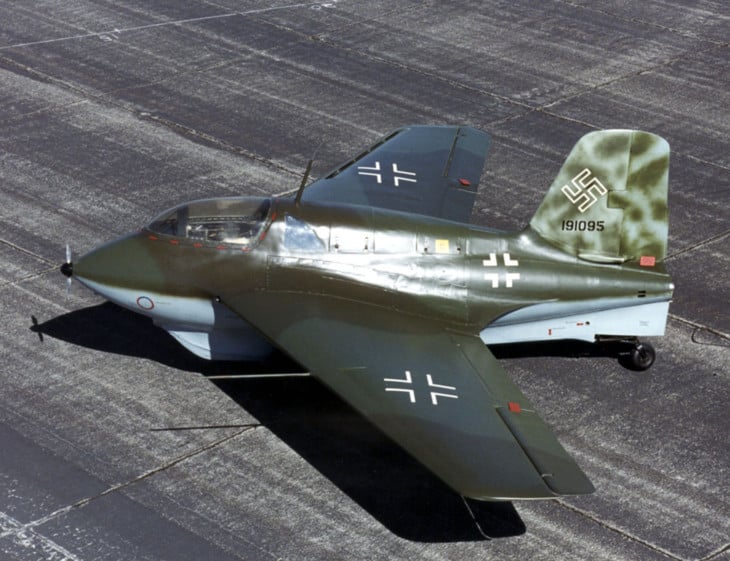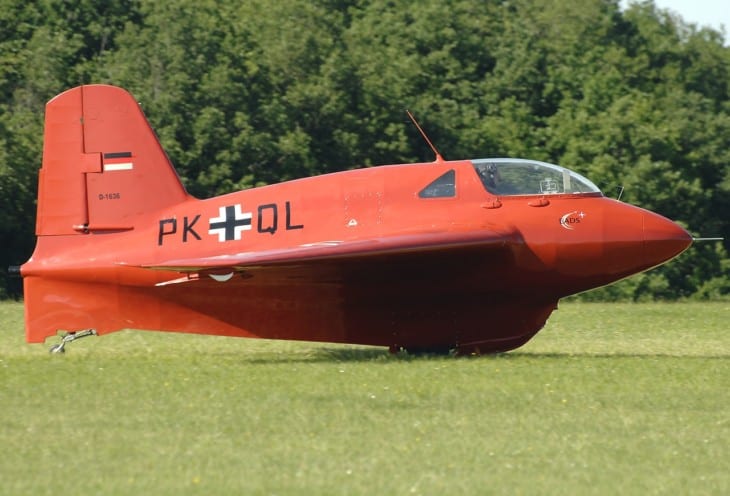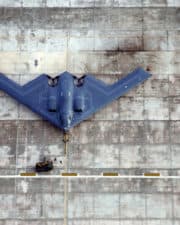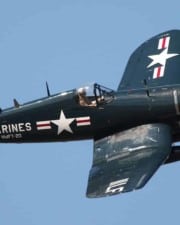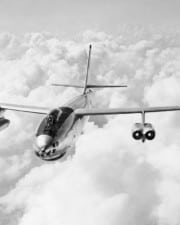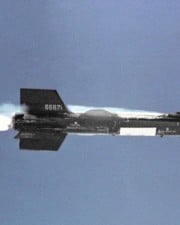Funded by our taxpayer dollars, we expect the aircraft our militaries use to be the best they can possibly be for the roles our militaries need them for to keep us safe. But not all military aircraft do this. These are twelve of the worst military aircraft ever built.
Indeed, since the beginning of modern military aviation back during WWI, there have been literally hundreds of amazing aircraft, but there have also been equally as many that have utterly failed in every role they’ve ever been put in.
For the purposes of this article, we are only including purpose-built military aircraft that actually became a reality. We are also looking at all types of military aircraft; including reconnaissance aircraft, bombers and trainers, not just fighters.
12. Vought F7U Cutlass
More info: Vought F7U Cutlass
The first jet aircraft with swept wings and afterburners to be used in US Navy service, the F7U Cutlass was marred by problems even before it entered service.
Vought built three prototypes for initial flight testing in 1948. All three would be lost during flight testing, each on a separate occasion. Despite this, the Cutlass still entered service with the US Navy in 1951, and its problems didn’t stop there.
Its two Westinghouse J34 turbojet engines lacked power and were notoriously unreliable. Similarly, the hydraulic system used to control the F7U’s control surfaces were prone to jams, making it rather accident prone.
But what ultimately led to its withdrawal from service in 1959 was not the introduction of better aircraft but the fact that the landing gear frequently collapsed during carrier landings, which posed a risk to everyone onboard the aircraft carrier, thus hastening its retirement from service.
11. British Aerospace Nimrod AEW3
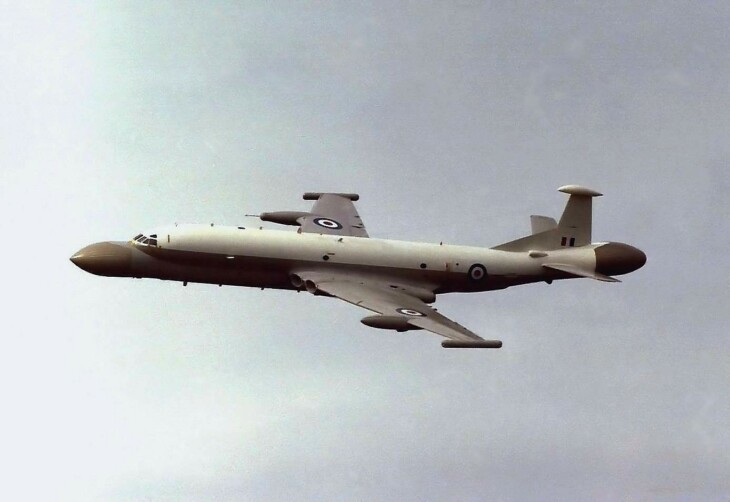
Most lists of the worst military aircraft ever built focus on fighters and bombers. But not all military aircraft are fighters or bombers. In that vein, the Nimrod AEW3 makes this list.
Modified from existing Nimrod MR1 aircraft, itself a militarized modification of obsolete de Havilland Comet airliners, the Nimrod AEW3 was a prototype airborne early warning (AEW) aircraft developed by British Aerospace for the Royal Air Force.
Aside from looking hideous, the Nimrod AEW3’s development was marred by cost overruns, changing requirements and delays, meaning that the 14 models that were eventually built were more expensive and delivered later than expected.
On top of that, when compared to the clearest alternative, the American-built Boeing E-3 Sentry, the Nimrod AEW3 was woefully ineffective, unable to meet the UK’s needs, leading to the project’s eventual cancellation.
Even when India attempted to revive the Nimrod AEW3 program to meet their AEW needs, they again found that it lacked the range to monitor its potential adversaries in any meaningful way.
10. Bell P-59 Airacomet

One of the first American jet aircraft, the Airacomet was supposed to be the fighter that would change the course of the war in the Allies’ favor. But its two General Electric J31 engines made it a poor fighter to say the least.
With a max takeoff weight of just under 14,000 lbs, the combined 4,000 lbf of thrust created by the engines made the Airacomet a rather sluggish design, and one that was lacking the maneuverability that was required for a truly great WWII fighter.
On top of that, its underpowered engines also compromised the Airacomet’s speed and range. Compared to contemporary piston fighters, it had around a 20% slower cruising speed and a 50% shorter range.
Indeed, all this proved such a problem that the USAAF cut its initial of 100 Airacomets in half and relegated them to trainer use only, and were never used as fighters.
9. Fairey Fulmar
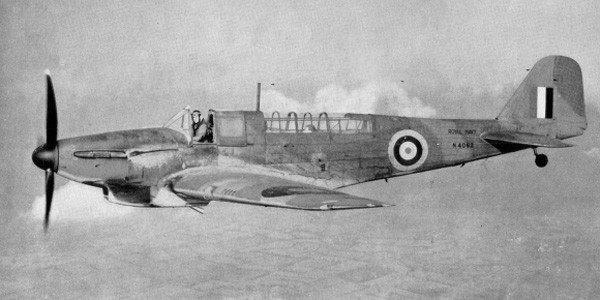
Unlike many of the aircraft on this list, the Fairey Fulmar was not doomed from the beginning. Indeed, when it first entered service, it was highly regarded due to it being one of, if not the most, reliable aircraft in the entire British air fleet.
However, its reliability couldn’t make up for the fact that its performance was unspectacular to say the least.
Although it could be guaranteed to be able to get in the air when it was needed to, when it came up against fighters like the formidable Mitsubishi A6M Zero, it stood little chance due to its inferior performance and handling characteristics.
To that end, it was largely relegated to reconnaissance flying from 1940 onward, where, though it gained infamy for its role in the hunting and sinking of the battleship Bismark, its long range ability made it highly susceptible to being captured and/or shot down when flying behind enemy lines.
8. Heinkel He-177 Greif

The only German long range bomber of WWII, the He-177 Greif (Griffin) should’ve been one of the best German aircraft of the war. Instead, the He-177 became one of the worst aircraft ever built.
For a bomber designed in the mid-1930s, its design was ambitious to say the least. Unfortunately, the He-177’s design exceeded the Germans’ technical ability.
To be able to reach its desired range of 6,000 km (3,700 mi, 3,200 nmi), the He-177 needed two engines capable of producing 2,000 hp (1,500 kW) of power. At that time, no aircraft engine came close.
To that end, Daimler-Benz built the DB 606 and later the DB 610 specifically for use on the He-177.
It was these engines, however, that ultimately doomed the He-177, as they were so technically complex that they required constant maintenance, even when not in use.
When they were used, the engines’ cooling systems were so poor that they regularly overheated and shut down, or simply caught on fire, leading to the crashes of numerous models throughout the war.
7. Boulton Paul Defiant
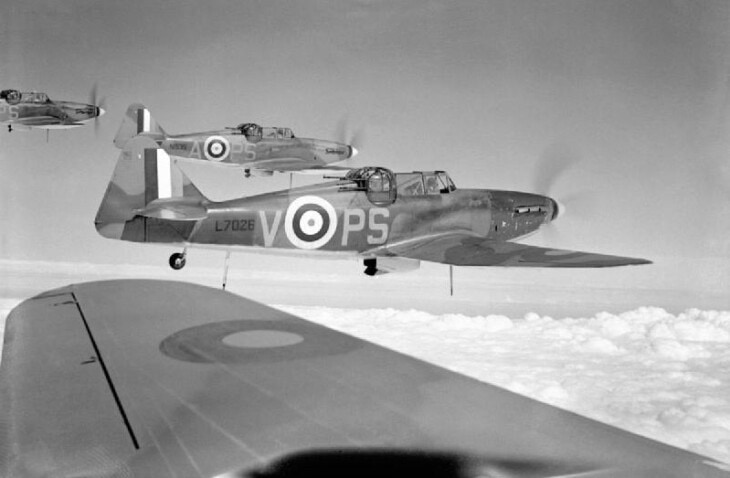
Another British aircraft, the Boulton Paul Defiant was built in direct response to the push for more maneuverable aircraft by the German Luftwaffe.
And whilst it succeeded as one of the most maneuverable Allied aircraft of the war, it was undermined in its role as an interceptor by the fact its armaments were all rear-facing.
Designed to shoot down bombers, the Defiant was ill-equipped to handle their fighter escorts.
Their rear-facing weapons made them, at least on paper, excellent at defending themselves when tailed in a dogfight. In reality, however, the highly maneuverable nature of WWII dogfighting made it difficult to shoot down tailing aircraft.
Likewise, their rear-facing weapons made it impossible to go on offense, leading to a high percentage of Defiants to be shot down before it was forced to be withdrawn from service in 1942 and replaced.
6. Blackburn Botha

Built in the period of rearmament that preceded the outbreak of WWII, the Botha was designed to be used as a torpedo bomber – and was meant to be instrumental in the hunt for German U-Boats and the protection of transatlantic convoys.
Though its design made it a formidable torpedo bomber on paper, it was let down due to the severely underpowered Bristol Perseus engines selected as the Botha’s powerplant.
By using underpowered engines, the Botha could not serve effectively as a torpedo bomber, and was withdrawn from this use in 1941.
With hundreds still on order, the British military establishment repurposed their Botha fleet for reconnaissance across the Mediterranean, where their slow speeds and lack of maneuverability made them easy pickings for enemy fighters.
As losses mounted, the Botha was withdrawn from this service too, being relegated to training and target drone use only, before being retired entirely in September 1944.
5. Supermarine Swift
More info: Supermarine Swift
Built by the same company responsible for the famous Spitfire and its navalized variant, the Seafire, the Swift was a nightmare for the Royal Navy.
After suffering several delays in the development period, the Swift entered service in 1954. But the issues with the Swift did not end there.
The Swift made headlines in Britain after a series of accidents caused the Navy to ground it for a while, meaning that when it was finally withdrawn from service in 1967, it only had a relatively brief service life.
From a performance perspective, the Swift was such a poor naval aircraft that it damaged the image of naval aviation in the UK and was (partly) used as a justification for the eventual nationalization, and subsequent consolidation, of the UK aircraft manufacturing industry.
4. Lavochkin-Gorbunov-Gudkov LaGG-3

One of the most produced Soviet aircraft during WWII, the LaGG-3 was nevertheless hated by the very people who flew it.
Despite being among the heaviest fighters of the war, the LaGG-3 was built from wood and had no armor to speak of, meaning the aircraft as a whole had a high fatality rate when it came up against better armored German aircraft like the Bf 109.
Furthermore, its Klimov M-105PF engine was woefully underpowered for its weight, thus limiting its speed, maneuverability and climb rate; the three most vital determinants in the outcome of any dogfight.
But what made it hated by the pilots who flew it the most was its poor construction quality – which was often accentuated by a lack of production standardization – and its relatively weak armaments. During the war, some Soviet pilots referred to the LaGG-3 as a widowmaker.
3. De Havilland Sea Vixen
More info: de Havilland DH.110 Sea Vixen
The premier British carrier aircraft of the late 1950s, 1960s and early 1970s, the Royal Navy had to suffer through 14 years of using a Sea Vixen that was already outdated by the time it entered service.
You see, the Sea Vixen was designed in an era of subsonic jets still using conventional guns. By the time it entered service, however, jets were supersonic and used high-speed aerial missiles that were perfect for downing subsonic fighters.
Further weakening the Sea Vixen’s effectiveness, the GEC AI.18 Air Interception radar installed on the Sea Vixen was also ill-suited to the new threats the Sea Vixen was expected to go up against.
Likewise, the Rolls-Royce Avon 208 turbojet engines installed on the Sea Vixen were notoriously prone to problems, which often led to fatalities. Indeed, of the 151 Sea Vixens built, 55 were lost due to accidents. And that’s before taking combat losses into account!
2. Heinkel He-162

Yet another German aircraft from WWII, the He-162 was supposed to be the more advanced answer to the Me 262 fighter jet. And while the Me 262 had its own fair share of problems, they paled in comparison to those of the He-162.
The He-162’s main problem arose from its construction. Built from wood, rather than metal (which was an increasingly scarce resource by 1944), the He-162 suffered from structural issues throughout the entirety of its short service life.
Though being made of wood meant it was more lightweight than other German fighters, it was rather compact, which placed a constraint on the amount of fuel it could carry. Even at full fuel, the He-162 could only fly for around 20 minutes maximum.
Unlike the Me 163, where it was understood there’d be a short flight time, the He-162 was expected to fly much longer than its max flying time, meaning many aircraft were lost when they crashed due to running out of fuel, killing pilots Germany could ill-afford to lose.
Yet bailing out of the He-162 was not just impractical, but deadly.
Due to placing the engine at the top of the fuselage, any pilot bailing out of the He-162 risked being sucked into the engine (and indeed many were), contributing to dozens of pilot deaths that could otherwise have been easily avoided.
1. Messerschmitt Me 163 Komet
More info: Messerschmitt Me 163 Komet
Perhaps the most innovative aircraft design up until that point, the Me 163 stands apart as the only rocket-powered aircraft ever built. An impressive feat irrespective of everything else.
But this is precisely what doomed the Komet.
Using a single Walter HWK 109-509 rocket engine, the Komet couldn’t use standard aviation fuel. Instead, it was powered by either T-Stoff (hydrogen peroxide) or C-Stoff (hydrazine hydrate and methanol).
Both of these fuels are incredibly volatile, and there numerous cases where ground crews were seriously injured due to improperly handling these fuels.
Using both fuels also weakened the Komet’s airframe due to the corrosive nature of both the fuels, meaning their operational service lives were limited from the get-go.
What’s more is that its much-celebrated top speed of 1,000 km/h (620 mph) was impractical reality; the Komet was simply too fast to best even the fastest piston fighters.
Similarly, the Komet’s fuel burn was so high that it had a flying time of about seven and a half minutes, meaning it spent relatively little time in the skies or in dogfights.
Related Posts
